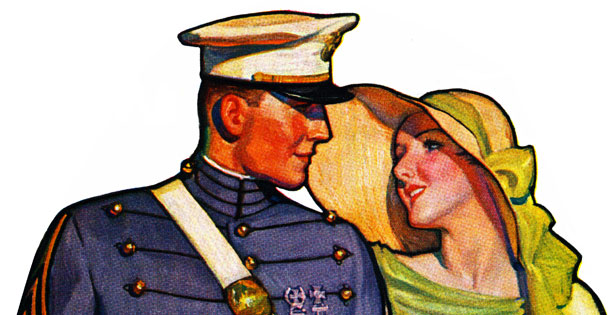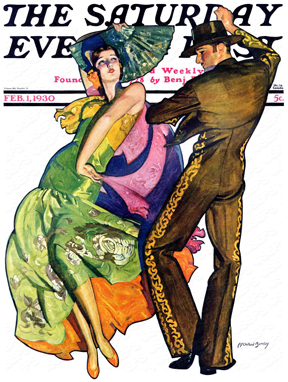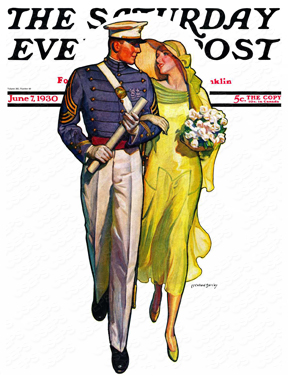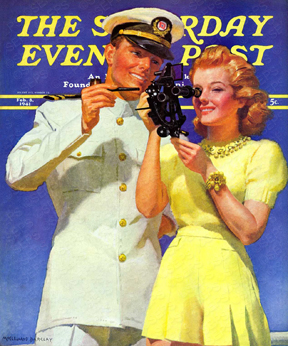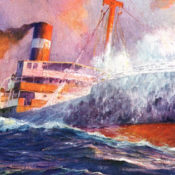McClelland Barclay was born in St. Louis, Missouri, in 1891. He attended grammar school and high school in the area and studied art at Washington University, St. Louis. During those years he was a student of H.C. Ives, George Bridgman, and Thomas Fogarty.
After moving to New York, he began his career as a magazine illustrator in 1912. He quickly became know for using bold colors to paint strikingly beautiful women in rather simple settings. This is best exemplified by a series of paintings he did for General Motors, which carried the slogan “Body by Fisher.” Some of his more noteworthy advertising clients included Lever Brothers Company, Frigidaire, A&P, Elgin Watches, and especially Humming Bird Hosiery.
Covers by McClelland Barclay
The Flaminco
McClelland Barclay
February 1, 1930
Military Guard and Girl
McClelland Barclay
June 7, 1930
Naval Officer and Redhead
McClelland Barclay
February 8, 1941
Purchase prints of McClelland Barclay’s work at Art.com.
He also illustrated fiction for many of the large circulation magazines. His use of color and his ability to capture the flowing grace of his subjects made his covers for The Saturday Evening Post and The Country Gentleman particularly memorable.
Barclay married Helen Marie Haskin in 1930, and almost immediately after he began to expand into jewelry design, metal sculpture, and utilitarian home decor. Under the name of McClelland Barclay Art Company he manufactured bowls, boxes, pins, bookends, and metal wall hangings. Women in dramatic poses and animal and nature scenes were popular.
Appointed a Lieutenant Commander in the United States Naval Reserve during World War II, Barclay began serving as a combat artist. Much of his work appeared on the cover of Sea Power magazine because of its realistic rendering of action scenes. He was also commissioned to paint officer portraits and to develop propaganda posters to encourage support of the war effort. Barclay was killed in action in 1943 when a Japanese submarine torpedoed his landing craft as it approached New Georgia Island.
The Art Directors Club Metal was awarded to Barclay posthumously for his valor and courage in service to his country and his profession. He was a man of many talents and interests who thrived in dynamic environments and died while doing what he loved most.
Become a Saturday Evening Post member and enjoy unlimited access. Subscribe now
